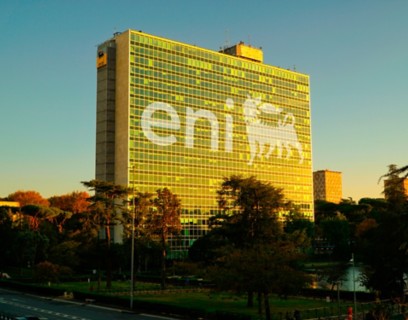MyEni Login
Model 231
The discipline of the “administrative liability of legal entities deriving from offences” (Legislative Decree 8 June 2001 no. 231), on which Eni’s Model 231 is based, provides that companies may be subject to fines or other punishments for offences committed or attempted – in Italy or abroad – in the interest/for the benefit of the company by its representatives, Directors or managers, or one of its financially and functionally autonomous organizational units. This also applies to those with even de facto management and control responsibilities (such as senior managers) and to anyone subject to the direction or supervision of all the people mentioned above.
Since 2004, Eni’s Board of Directors has adopted and constantly update its own 231 Model.
Eni’s Model 231 consists of a “general section” containing the architectural and governance principles of the organizational model and a "special section" that identifies the company processes, Sensitive Activities (business activities which may entail the risk of committing crimes underlying corporate liability) and the relative control standards set up to oversee them.
When the Model 231 was adopted, the relative 231 Supervisory Body was established to monitor the Model’s effectiveness and adequacy, and to report on its implementation to the top management. The responsibility for updating Model 231 lies with the Chief Executive Officer, who has already been entrusted with its implementation. The amendments to the general section follow different procedures according to the chapter to be modified.
Eni encourages the adoption and the effective implementation by all the subsidiaries of adequate systems to prevent the risks of corporate responsibility arising from crime. To this regard, Eni internal regulatory system ensure that all Italian subsidiaries of Eni adopt, in the management of the activities at risk of corporate liability, control principles and instruments that are consistent with those set out in Model 231.
The representatives designated by Eni in the corporate bodies of the companies or entities where Eni does not have a controlling interest shall promote the adoption of systems to prevent the risk of corporate responsibility deriving from a crime, consistently with the measures adopted by Eni.
Model 231: general standards of transparency
Model 231 - and for foreign Subsidiaries the Compliance Model - are based on the following general standards of transparency, which both Eni and Eni's Subsidiaries, in Italy and abroad, and third parties are required to comply with, in accordance with the wording set out in appropriate contractual clauses/statements:
- Segregation of duties: there must be a segregation between who performs, who controls, and who authorises activities, namely a separation of duties and responsibilities so as to avoid any concentration of incompatible activities with the same person and the creation of risk conditions regarding the reliability of the information and correctness in performing such activities;
- Regulations: there must be company regulations and formalised procedures providing at least the general reference principles for governing the Sensitive Activity (principles of conduct, roles, responsibilities, activities, operating modalities and controls relating to the management of the Sensitive Activity);
- Powers of signature and authorization: with regard to the people assigned to manage Sensitive Activities, there must be formalised rules for exercising the signing powers and internal powers of authorisation that are appropriate to guarantee that these powers are assigned in coherence with the tasks, roles and responsibilities defined by the company organisation chart and the organisational documentation;
- Traceability: the persons, functions involved and/or the computer information systems used must ensure the identification and reconstruction of the sources, the information elements and the controls performed in support of formulating and implementing the Company decisions and the ways of management of the financial resources.
Eni.com is a digitally designed platform that offers an immediate overview of Eni's activities. It addresses everyone, recounting in a transparent and accessible way the values, commitment and perspectives of a global technology company for the energy transition.
Discover our mission

















